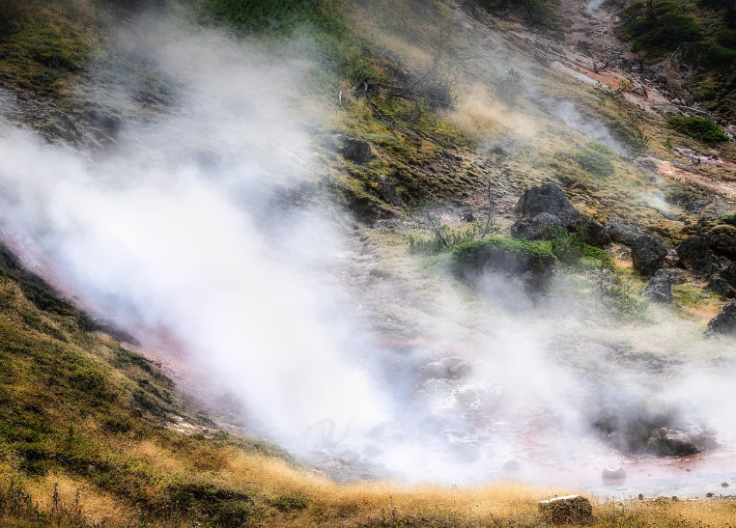Yellowstone National Park Supervolcano Eruption Fears Continue: What Could Happen According To Volcanologists
Understanding The Risks And Preparedness For Yellowstone's Supervolcano Future

Concerns about the Yellowstone National Park supervolcano erupting have not faded, despite scientific evidence suggesting such an event is unlikely in the near future. Recent research points to a possible future eruption that could reshape the planet's climate and cause widespread destruction. Scientists continue to monitor the volcano's activity, emphasising that while an eruption isn't imminent, the potential consequences remain severe.
In January 2025, the United States Geological Survey (USGS) published a detailed analysis of what lies beneath Yellowstone. Using advanced measurements of electrical conductivity, researchers created a three-dimensional map of the magma chambers. The findings show a significant presence of magma, particularly concentrated under the north-east of the Yellowstone Caldera, which last erupted around 630,000 years ago.
The study reveals that about 400 to 500 cubic kilometres (approximately 95–120 cubic miles) of silica-rich rhyolite magma is stored in this region. This volume exceeds that of the last major eruption, highlighting the potential for a large-scale event. Rising basalt magma from deeper within the Earth is increasing heat in the area, which may gradually add to the magma volume over time.
Is A Super-Eruption Possible?
Despite the large magma stockpile, experts emphasise that Yellowstone's next super-eruption isn't overdue. Historically, the three major eruptions—Lava Creek 630,000 years ago, Huckleberry Ridge over two million years ago, and Mesa Falls about 1.3 million years ago—occurred with an average interval of around 735,000 years. Since the last was 630,000 years ago, the next one could be many thousands of years away. Therefore, current signs do not point to an immediate threat.
Examining previous Yellowstone eruptions helps to understand what might happen if the volcano reactivates. Past super-eruptions have produced vast ash clouds, destroyed surrounding landscapes, and led to the formation of the large caldera seen today. The last eruption, 70,000 years ago, was less explosive but still significant, involving lava flows and minor ash emissions.
What Would Happen During a Yellowstone Eruption?
In the event of an eruption, the initial phase would involve violent explosions, with ash and pumice reaching into the upper atmosphere within minutes. The ash cloud could spread across North America and beyond, causing darkness, fires, and respiratory hazards. Pyroclastic flows—hot, fast-moving surges of ash, gas, and debris—would devastate everything within 100km (60 miles) of the vent, obliterating towns and habitats.
The ash fall could be extensive, with models indicating that areas as far as 1,500km (930 miles) away would experience disruptive levels of ash. Cities like Denver and Salt Lake City might face metres of ash, leading to widespread damage to infrastructure, agriculture, and water supplies. Heavy rains triggered by ash particles would worsen flooding, creating a landscape of mud and debris.
Global Climate Impact and Long-term Effects
Beyond regional devastation, the eruption would inject vast amounts of sulphur dioxide into the stratosphere. This gas forms aerosols that reflect sunlight, cooling the planet significantly. The 1991 Mount Pinatubo eruption caused a temporary global temperature drop of about 0.5°C (1°F), but Yellowstone's eruption could be up to fifty times larger.
Computer models estimate that a super-eruption could lower global temperatures by as much as 4°C (7°F), with the coldest periods lasting several years. This cooling would severely impact agriculture worldwide, leading to food shortages and potential famine. Past events like the 1815 Tambora eruption caused the 'Year Without a Summer', resulting in drought, crop failure, and social unrest across Europe and North America.
The Future of Yellowstone's Supervolcano
While the scientific community agrees that Yellowstone is unlikely to erupt in the immediate future, the potential consequences of a super-eruption remain sobering. Current studies indicate that the volcano's magma chambers are large but not on the verge of an imminent explosion. Still, the possibility of a catastrophic event cannot be dismissed. For now, the best approach is ongoing scientific observation and preparedness, recognising that while the threat is distant, it is not impossible.
© Copyright IBTimes 2025. All rights reserved.




















